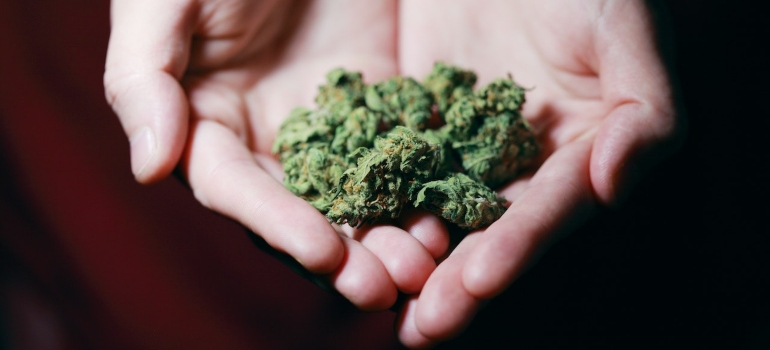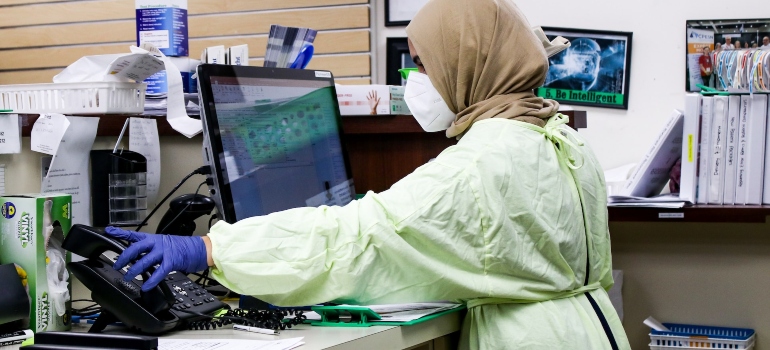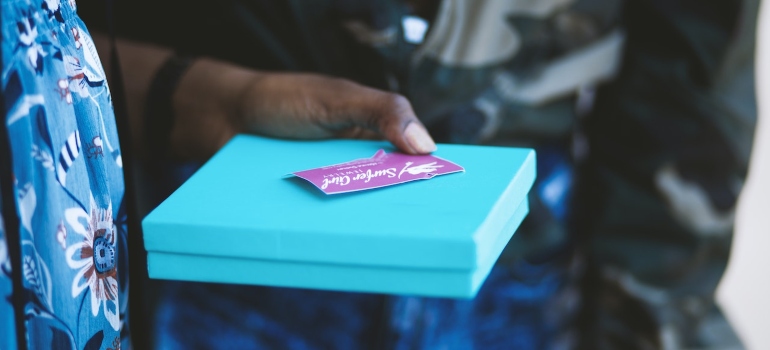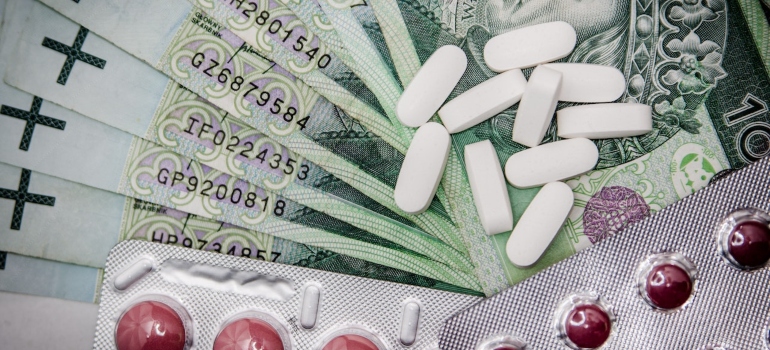The Long-Term Side Effects of Marijuana Abuse
Marijuana usage has increased as both decriminalization and legalization of cannabis for recreational purposes have spread across the country, and public opinion about the drug’s dangers has changed. Nonetheless, it is important to note that the risks associated with using marijuana should not be overlooked. Despite its widespread usage and the generally positive public impression, marijuana can be hazardous. Whether you use it in a high or small dose, if you use it regularly, you can expect damage. Specialists in rehab centers across the nation, including us at Little Creek Recovery, are growing concerned about this sudden increase in marijuana usage. Thus you’ll get to read about all the long-term side effects of marijuana abuse in this article.
Jump to Section
What can be found in Marijuana?
Marijuana, also known as pot, herb, grass, Mary Jane, bud, ganja, and many other slang names, is a cannabinoid substance that includes compounds like THC (delta9 tetrahydrocannabinol) and CBD (non-psychoactive cannabidiol). The greenish-gray blossoms of the Cannabis sativa or Cannabis indica plant are what people often refer to when they talk about marijuana or cannabis. Joints, blunts, water pipes (sometimes called bongs), and pipes are all ways that people use marijuana.

In addition, people consume various forms of marijuana extracts by ingestion or smoking (often referred to as “smoking weed”), which provides a high concentration of THC and may have adverse consequences. Smoking this weed regularly can cause really severe negative outcomes. And you’ll likely have to go through marijuana rehab Pennsylvania and be hospitalized.
Have you ever heard of synthetic marijuana?
Addiction to synthetic marijuana may be more harmful than that of marijuana itself. As a result of its chemical composition, those who misuse it are more prone to become dependent on it, despite its great euphoric quality. Depressive episodes, anxiety, irritability, and paranoia are all possible withdrawal effects. Synthetic cannabis has been linked to heart disease and renal failure in users who have been high for an extended period of time. Synthetic marijuana users should seek medical help immediately because of the dangers it poses.
Most synthetic cannabinoids enter the US black market after being made in unrestricted Asian nations. Some are quite legitimate and acceptable for human consumption, while others are very dangerous and poisonous. Synthetic marijuana has a wide variety of chemicals, some of which are classified as Schedule I drugs alongside heroin and crack cocaine. Many synthetic cannabinoids are linked to deadly heart attacks, severe bruising, and aggressive behavior. Therefore, it is crucial to learn whether or not the product you want to use is both safe and legal. Sadly, we have seen at rehab near Princeton NJ, more and more cases of addiction to synthetic marijuana. And we witness firsthand the long-term side effects of marijuana abuse.
What will weed do to your brain?
Marijuana has a psychoactive effect on the human brain. Marijuana’s effects may make acquiring new information or carrying out complex activities hard. Cannabidiol (THC) impairs cerebellar and brain processes, including balance, posture, coordination, response time, and posture.
Side effects of smoking Marijuana
Consequences of using or consuming cannabis (marijuana) include but are not limited to the following:
- Headaches
- Dry and swollen eyes
- Headaches and dizziness
- Fatigue
- Drowsiness

Other negative outcomes from chronic marijuana usage may include:
- Diarrhea and sickness
- Disorientation
- Increased heart rate
- Psychosis
- Increased appetite
- Hallucinations
Withdrawal symptoms
Symptoms of marijuana withdrawal often start two to four days after the last use and reach their climax during the first week. Extreme insomnia may last for up to 30 days for some individuals. Similarly, someone going through cannabis withdrawal may have trouble focusing, feel irritable or restless, and have trouble sleeping. Although, other health and emotional issues, such as depression, may accompany these traits.
Can you overdose on Marijuana?
Yes. If a person takes a large enough amount of a substance, they may indeed overdose. Many people who use marijuana, even at large doses, find that it has unpleasant side effects in addition to the euphoric ones. Anxiety, paranoia, and despair are only some of the symptoms reported by some individuals. Eating cannabis may lead to psychosis, but hospital emergency rooms have seen more instances recently.
What are the long-term side effects of marijuana abuse?
The dangers and long-term effects of marijuana use are a growing concern. Studies suggest that using marijuana, especially starting in adolescence when the brain is still developing, can have lasting consequences on the brain development and lead to various physical and mental health problems.
1. Respiratory difficulties
One of the physical health risks associated with marijuana use is respiratory difficulties. The smoke from marijuana can irritate the respiratory system, including the throat and lungs. And frequent use over a prolonged period increases the likelihood of developing several problems, such as a persistent cough, chronic bronchitis, and a heightened risk of pneumonia and other lung illnesses.

2. Pregnancy-related risks
Pregnancy-related risks are also a concern. Children who are exposed to marijuana while in the womb are more likely to have attention, memory, and problem-solving difficulties. Additionally, moderate amounts of THC can pass on from a nursing mother to her child through breast milk. This would negatively impact fetal brain development.
3. Increased risk of testicular cancer
The use of marijuana, particularly during adolescence, can also increase the risk of developing testicular cancer. Research indicates that heavy usage among teenagers is linked to more aggressive forms of this type of cancer. Several studies have shown an association between heavy marijuana usage by adolescents and aggressive forms of testicular cancer. This highlights the importance of understanding the potential dangers of marijuana use, especially during critical stages of development such as adolescence.
4. Chronic, debilitating vomiting and nausea
Cannabinoid hyperemesis syndrome is a not so common, but serious side effect of long-term cannabis usage. It is characterized by severe abdominal pain and vomiting that can last for several hours. And it often requires partial hospitalization program rehab in Pennsylvania. The exact cause of CHS is not well understood, but it is thought to be related to the effects of marijuana on the body’s endocannabinoid system, which regulates various physiological processes such as appetite, pain, and nausea.
CHS symptoms may be relieved by taking a hot bath or shower, which is why it is sometimes referred to as “hot water abuse.” The condition typically develops after several years of heavy marijuana use and can persist even after the person stops using marijuana. Treatment for CHS typically involves marijuana rehab, and in most cases, medication may be prescribed to relieve symptoms.

5. Risk of heart attack
The inhalation of THC (the psychoactive component of cannabis) may lead to a drop in blood pressure. Over the course of three hours, the medication has the potential to produce as many as fifty heartbeats. The risk of cardiovascular disease is increased among smokers who already have heart issues. The Journal of the American Heart Association reports that chronic marijuana use, even by children without preexisting heart conditions, may lead to an increased risk of cardiovascular disease, stroke, and other cardiovascular complications. So, think about this next you light up a smoke.
6. Brain development difficulties
Regular marijuana use throughout adolescence, when the brain is still growing, can impair learning, memory, and impulse control, according to some studies. There is research that reveals substantial abnormalities in brain development when chronic cannabis usage begins before age 18. For individuals over the age of 18, possibly lasting memory loss and reductions in IQ. They are all associated with chronic or heavy marijuana use.
7. Psychiatric disorders
Several studies show a relationship between marijuana usage and an increased risk of mental health issues such as schizophrenia, depression, and anxiety among people who are genetically susceptible. In fact, according to one research, everyday marijuana usage, especially at a young age, causes people with certain genes seven times more likely to develop schizophrenia than those with the gene who do not use the substance. In addition, marijuana has been demonstrated to exacerbate the symptoms of schizophrenia in people who already have the disease.
8. Addiction
Cannabis is an addictive drug. Adolescent usage increases the risk of developing a habit of abuse or addiction. Moreover, individuals who start using marijuana at a young age may become compulsively dependent on it, leading to difficulty in quitting even when they want to.
Over time, their bodies may adapt to the presence of the drug, making it harder for them to stop using it. At least not without experiencing withdrawal symptoms. Such as irritability, changes in mood, difficulty sleeping, decreased appetite, cravings for marijuana, and restlessness. Additionally, constant marijuana use can have negative impacts on several aspects of life. Such as work, school, and relationships. This type of substance use disorder can only be diagnosed by healthcare professionals using the criteria listed in the DSM-5. Symptoms may include spending excessive time using and obtaining the drug, continuing to use despite problems, giving up other activities, getting in dangerous situations, and experiencing withdrawal if use is stopped.
9. Increased risk of other drug use problems
Some studies show that marijuana users have an increased risk of addiction to other drugs, such as alcohol or nicotine, in the future or concurrently. It’s important to note that marijuana is often a gateway drug. People who use it regularly are more likely to try other, more dangerous drugs. The use of marijuana can also interfere with an individual’s ability to control their drug use. And can lead to the development of a substance use disorder, where the individual compulsively uses marijuana despite its negative impact on their life. It’s crucial for individuals to be aware of these long-term side effects of marijuana abuse. And to seek help if they feel that their marijuana use is becoming a problem.
What treatment options are available?
Marijuana abuse and addiction may cause a lot of problems in one’s life. But treatment is available if you or a loved one are experiencing these issues. It is very common for people with marijuana use problems, particularly teenagers, to simultaneously struggle with other mental health issues. Research shows that people with this substance abuse problem can also easily get hooked on other drugs. Such as alcohol or cocaine. Individuals diagnosed with marijuana use disorder may benefit from therapy that tackles polysubstance use and treats co-occurring mental health issues. Various dual-diagnosis treatment centers Pennsylvania have a proven record of treating these issues successfully.

Cognitive-behavioral therapy (CBT)
The core premise of cognitive behavioral therapy is that flawed actions are the result of flawed thought processes. CBT helps people avoid relapsing into drug use. It instructs them on ways for altering their outlook and enhancing their capacity to deal with stressful situations.
The therapy also focuses on teaching individuals coping skills to help them maintain their sobriety. CBT aims to replace negative thoughts and behaviors with positive ones to create a healthier mindset and a greater ability to overcome obstacles in life. The end goal of CBT is to help individuals make lasting changes in their thoughts, emotions, and actions, leading to a more fulfilling and substance-free life.
Motivational enhancement therapy (MET)
This kind of therapy, also known as motivational interviewing, focuses on empowering clients to find their own answers to the challenges they have in kicking their marijuana habit. The therapist facilitates the development of personalized strategies rather than prescribing specific actions or adjustments. Reflections, empathy, and encouragement are all part of the dialogue.
MET is a client-centered approach, designed to help the client resolve any internal conflicts they may have about quitting marijuana. This therapy aims to create an environment where the client feels heard, understood, and supported, as they work towards their goal of quitting. The therapist acts as a facilitator, using open-ended questions and active listening skills to help the client identify their own motivations for change, and develop their own unique plan for quitting. The ultimate goal of MET is to help the client gain the confidence and self-efficacy they need to succeed in overcoming their marijuana addiction.
Contingency management (CM)
By offering material incentives, CM promotes desirable behaviors like marijuana abstinence. Gift cards, cinema tickets, or something else may be the incentive. Positive reinforcement is maintained via the achievement of intermediate goals, such as a drug-free urine test, with the ultimate goal being a lifelong commitment to a lifestyle characterized by regular physical activity and nutritious eating.
Your cannabis usage history, mental health history, and drug abuse history will all play a role in determining how long and what kind of therapy you need.

The reward system is based on good behavior milestones. And you receive rewards for maintaining a drug-free state, which they will determine from a clean urine test, for example. The aim of CM is to help establish healthy habits and a lifestyle centered around regular exercise and healthy eating. The duration and specifics of treatment plans that utilize CM are unique to each individual and depend on factors such as the frequency and amount of cannabis use, the presence of co-occurring mental health conditions, and a history of polysubstance use.
How to have “the addiction conversation” with a loved one?
If you want to approach your loved one about their addiction, it will be simpler if you take the time to establish boundaries and learn as much as you can about addiction and the available treatment choices. And, of course, ask for assistance.
Set your boundaries
Setting healthy limits with a loved one is crucial to maintaining a healthy connection. Boundaries outline the limits of acceptable behavior from others toward you. Addiction, however, may soon lead to problems with maintaining healthy boundaries. When a loved one engages in inappropriate conduct, such as borrowing money and then failing to repay it, it’s important not to ignore it but instead to communicate the effect such behavior has on the relationship. It is up to you to express your limits in a reasonable and consistent way.
Educate yourself about their addiction
Spend some time learning about drug abuse, addiction, and your available treatment choices. You may approach the subject of your loved one’s addiction with greater confidence if you have a firm grasp of the disease itself, its symptoms, and any possible off-ramps. Don’t let the advice of well-meaning loved ones divert you from focusing on what we know to be true about addiction. Don’t sugarcoat the ways in which you loved one’s drug abuse is affecting you and your family. Moreover, investigate what kinds of treatments are out there. Discussing the options with a specialist in the field of drug abuse may help clarify the distinctions between programs such as:
Detoxification
Your loved one may need to go through medical detox to safely and comfortably rid their body of drugs or alcohol. Detox alone seldom results in long-term sobriety. Usually, this is the initial stage of a more extensive therapy strategy.

Inpatient programs
For the length of therapy, patients might live and receive care at a facility that specializes in residential or inpatient rehabilitation. Your loved one may learn to deal with the problems that lead to their drug use or abuse and create new coping mechanisms via inpatient programs that include extensive counseling, psychiatric care, education, and therapy sessions both individually and in groups. In addition, some treatment centers welcome visitors, so you may show your support for your loved one even while they go through rehabilitation.
Outpatient programs
Care without restrictions on your loved one’s daily life has many benefits. But, in severe cases, inpatient care is still the best option. You should make an appointment at a clinic where there are various outpatient treatments and counseling, both in group settings and one-on-one with patients. Some institutions even include family therapy.
Aftercare
Aftercare services, including counseling, support groups, and so on, may assist your loved one to maintain sobriety after they exit a formal treatment facility. Research has shown that people who enter and complete a drug abuse treatment program and continue to engage in aftercare activities have a larger chance of overcoming their substance use disorder and enhancing their vocational, social, and psychological functioning.
Research the costs of treatments
Find out more about the cost of the procedure before broaching the subject with your loved one. Most insurance companies cover at least some of the cost of addiction treatment. Though the exact amount varies widely. And it will depend on a number of factors like the length of treatment, the facility’s location, and the individual’s specific characteristics. For example, pregnancy, significant medical issues, or mental health problems. Cigna rehab coverage is a viable option, and they also cover mental health services.

You can also look into Aetna rehab coverage which covers most of the substance use-related treatments. Luckily, most clinics provide payment arrangements for those without insurance. The price of therapy shouldn’t prevent anybody from getting help.
To Sum Up
To sum up, the long-term side effects of marijuana abuse are especially visible when marijuana use starts in adolescence or during pregnancy. Frequent and long-term marijuana use can affect the respiratory system, brain development, and mental health. It is also possible to become addicted to marijuana, and withdrawal symptoms once you try to stop consuming are hard to endure. If someone you love is struggling with marijuana misuse or addiction, there is help available through various forms of behavioral therapy and addressing co-occurring mental health disorders. The specifics of treatment will depend on individual factors and the severity of the addiction. Feel free to seek help at Little Creek Recovery because we offer it from the heart and with no judgment.
